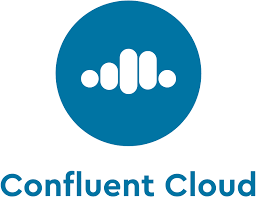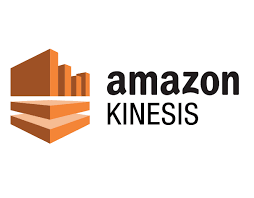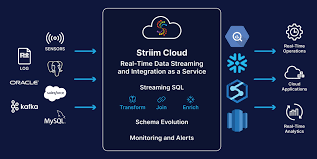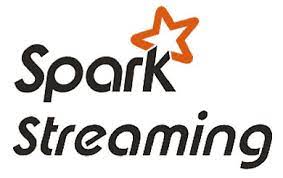The data-driven age we live in today generates enormous amounts of data from sensors, Internet of Things (IoT) devices, apps, social networks, online transactions, and other sources.
Organizations must continuously monitor and analyze live data using real-time Stream Processing Systems to fully utilize the potential of data gathered from several external resources.
Many appealing features and functionalities are available in stream processing applications and tools that enable developers to incorporate real-time streaming processes through interactive user interfaces or simple code.
Platforms that enables continuous, real-time data flow from several sources to be processed, analyzed, and acted upon almost instantly are known as data streaming platforms. Interestingly, the best data streaming platforms will be covered in this article, so keep reading!
Table of Contents
14 Best Data Streaming Platforms
The best data streaming platforms are:
1. Confluent Cloud

Using Confluent Cloud, you can handle, store, and access real-time data streams. It gives Apache Kafka enterprise-level features without extra administration or monitoring. You can dynamically scale your streaming workloads depending on how your applications’ needs change. You will always have the appropriate number of resources to manage your streaming data because it can scale up or down automatically.
The Confluent Cloud offers fully managed cloud services on AWS, Azure, and Google Cloud, along with self-managed software deployment for on-premises and private cloud workloads. Applications like event-driven architectures, microservices, and real-time analytics benefit from it.
Key Features of Confluent Cloud
- You can have flexibility and scalability with serverless clusters. You can quickly satisfy your data streaming needs with on-demand automated scale-up and shrink-down.
- We provide endless data retention and integrity to meet your data storage needs. You may make Confluent Cloud your source of truth without worrying about endurance.
- One of the best uptime SLAs in the business, 99.99%, is provided by Confluent Cloud. When multi-zone replication is used with it, you are protected against data loss or corruption.
2. Cloud DataFlow
The completely managed serverless data streaming platforms from Google Cloud, called Cloud Dataflow, makes building and managing effective data pipelines easier. It is appropriate for various use cases since it provides a unified programming model for batch and streaming data processing, thanks to Apache Beam.
The scalability, flexibility, and real-time data processing capabilities of Google Cloud Dataflow and its seamless interface with other Google Cloud services have made it famous. It is perfect for data translation, enrichment, and real-time analytics.
Key Features of Cloud Data Flow
- Filtering ineffective data is possible with Cloud DataFlow, one of the best data streaming platforms but it could slow down the streaming analytics process. This program supports real-time data streams by using Python 3 and Python SDK.
- The data streaming tool also employs Apache Beam with Python to create pipelines that guarantee data is retrieved, converted, and analyzed precisely from various IoT services and other sources.
3. Apache Kafka
Businesses may create and manage pipelines and apps that use real-time data using Apache Kafka, a distributed, open-source streaming platform. Organizations utilize Apache Kafka extensively for streaming data processing and analysis because of its fault tolerance, scalability, and high throughput.
Numerous use cases can be accommodated using Apache Kafka. Microservices, event-driven architectures, and real-time analytics are all supported. The data streaming platforms offers a solid publish-subscribe messaging mechanism for dependable and effective data streaming.
Key Features of Apache Kafka
- One of the most popular and in-demand data streaming solutions, Apache Kafta, was created in 2011. Businesses can utilize Kafka to manage peak data ingestion loads and big data messaging because of its ability to handle large data volumes.
- The main Apache Kafka application integrates other third-party services on the back end. In addition to simply providing stream processing and analytics, its infrastructure makes integrating other real-time streaming platforms straightforward.
4. Amazon Kinesis

The well-known managed data streaming platform Amazon Kinesis makes real-time data processing and analysis for organizations possible. It is easily compatible with Amazon S3, Amazon Redshift, and Amazon Elasticsearch, among other AWS services.
Amazon Kinesis offers many methods for handling streaming data, such as machine learning with Kinesis Data Analytics for Apache Flink and real-time data analytics with Kinesis Data Analytics. Additionally, Kinesis supports various programming languages, making it simple for developers to create streaming apps in their language.
Key Features of Amazon Kinesis
- Businesses can use open-source Java libraries and SQL editor connectors with this unique real-time data streaming technology. Scaling, application execution, and other critical tasks are readily handled via Kinesis.
- It lessens the expenses and complications businesses face while processing real-time data. Because of Kinesis’s flexibility, companies can handle anything from machine learning algorithms to basic report analytics.
5. IBM Stream
The managed streaming data platform IBM Streams makes real-time analytics and insights possible. It has an intuitive UI and supports a variety of sources and destinations. Real-time data streams can be subjected to advanced analytics using IBM Streams.
The fault-tolerant architecture and high availability of IBM Streams are among its best features. To guarantee uninterrupted processing of data streams, it is built to handle massive data processing with little downtime. IBM Streams’ distributed architecture, which divides processing duties among several nodes, allows for high availability.
Key Features of IBM Stream
- IBM Stream Analytics is a real-time data streaming solution offering an Integrated Development Environment (IDE) that supports Python, Java, and Scala programming languages.
- Its development capabilities facilitate data monitoring, data management, and informed decision-making for developers.
6. Azure Stream Analytics
High throughput and low latency streaming data intake, processing, and analytics are all made possible by Azure Stream Analytics, a dependable and fully managed platform. It enables users to process streaming data by writing SQL-like queries. This facilitates the rapid onboarding of developers with experience with SQL on the platform.
With the help of user-defined C# for JavaScript functions, users can add custom code to Azure Stream Analytics and increase the capability of their queries. Blob storage, IoT Hub, Event Hubs, and other Azure services are wholly integrated with the tool. This enables customers to create end-to-end streaming solutions that easily incorporate several Azure components and transfer data between services.
Key Features of Azure Stream Analytics
- One of the most well-known names in real-time data streaming environments is Azure Stream Analytics.
With the aid of C#, JavaScrip, and SQL, it can deliver quicker results in less time while concentrating on crucial end-to-end analytics. - Additionally, it has machine learning capabilities that simplify identifying dips, adverse trends, spikes, etc. This implies that users can easily understand data visualizations.
7. Striim Cloud

With built-in support for more than 100 ports, Striim Cloud might be the best option. A fully managed SaaS platform built for the cloud can enable you to stream real-time data and easily interact with your current data repositories.
As one of the data streaming platforms, it is a straightforward drag-and-drop interface is provided by Striim Cloud, which not only aids in pipeline construction but also delivers data insights. The most widely used analytics tools, such as Databricks, Snowflake, Azure Synapse, and Google BigQuery, are supported.
Key Features of Striim Cloud
- It is one of the best data streaming platforms that supports hundreds of connections to link various data sources together and uses change data capture (CDC) for real-time ETL processes.
- Striim Cloud is a distributed streaming SQL platform that expands to billions of events per minute, combines with historical caches, and enables continuous queries on streaming data.
- Additionally, it offers strong data pipeline monitoring capabilities and streamlines the process of developing real-time data pipelines.
8. Estuary Flow
Estuary Flow is a well-liked data streaming platforms with a simple setup, an easy-to-use UI, and affordable price options. Estuary Flow handles your data streaming workflows, leaving you to concentrate on your core business as we fully manage our platform. Its support for several sources and destinations makes more adaptability and variety in data processing possible.
With Estuary Flow, you can execute intricate data transformations, aggregations, and analytics in real time, thanks to its potent data stream processing engine. It excels as a managed ETL process solution, providing a comprehensive feature set and pre-configured connectors to streamline data loading, transformation, and extraction.
Key Features of Estuary Flow
- Estuary Flow guarantees data consistency and expedites the ETL process by easily interfacing with several data sources.
- Estuary Flow is a compelling choice for all your data integration requirements because of its integrated machine-learning models and real-time analytics capabilities, allowing enterprises to provide meaningful insights quickly and effectively.
9. Vertical Knowledge

Vertical Knowledge (VK) facilitates large-scale decision-making for individuals and businesses by providing the best quality data products and insights. Via a web-based data streaming environment, the VK Streaming Data Platform enables you to process enormous volumes of data.
It is one of the data streaming platforms and its automated data discovery can provide you with valuable insights.
Key Features of Vertical Knowledge
- You can efficiently operate across many data sources using automated data streams.
- You can cut down on manual processes—which are frequently time-consuming—by using fast discovery.
- Create deep data sets by executing pipelines simultaneously from several sources. As a result, you can produce worldwide results for particular keywords.
- You can utilize APIs to interface with external systems or export your data sets in raw CSV or JSON format.
10. StreamSets
A complete end-to-end data integration solution, StreamSets DataOps Platform enables enterprises to create, implement, and oversee high-performance data pipelines for various use cases.
The sophisticated data routing capabilities of StreamSets are one of its distinctive features. Based on the rules you provide, this platform has built-in functionality that directs data automatically to the appropriate location.
StreamSets provide robust error handling and data validation capabilities. An integrated data quality engine in this platform looks for mistakes and anomalies in the data and notifies users when problems are found. Furthermore, StreamSets offer retry and automatic error handling to guarantee that data pipelines continue functioning despite faults or failures.
Key Features of StreamSets
- Batch and streaming data processing on a single platform
- Visual interface that is simple to use for creating and managing pipelines
- smooth interaction with cloud services and widely used big data technologies
- a vast library of pre-configured connectors for different data destinations and sources
10. Apache Flink
Apache Flink is another open-source stream processing platform that can manage workloads involving both batch and stream processing. Flink is a great option for many applications because of its excellent performance, fault tolerance, and flexibility.
Apache Flink is a robust platform for stream processing that offers fault tolerance, flexibility, high performance, and cutting-edge streaming features. However, it has a high learning curve, needs many resources, and is difficult to set up and maintain. Despite these difficulties, Flink is a flexible platform that can be utilized for a range of real-time data processing applications.
Key Features of Apache Flink
- High performance, low latency processing, and support for batch and streaming applications are all features included in Apache Flink.
- Due to data replication across several nodes, Flink offers a high degree of fault tolerance, preventing data loss in the case of a failure.
- Machine learning, event processing, and real-time analytics are just a few uses for Flink’s adaptable design.
- Because of Flink’s great scalability, you can add or remove nodes as needed to accommodate variations in the volume of data.
11. Talend
Talend’s design addresses the difficulties of real-time data streaming and integration. Its intuitive interface and drag-and-drop feature make it possible to visually map data sources, transformations, and destinations. This speeds up the time it takes to gain insights and lowers the learning curve considerably.
Talend offers an extensive library of pre-built connectors for smooth integration with many data sources, including databases, cloud storage, messaging apps, and social media sites. Its distributed processing frameworks and improved data streaming algorithms ensure efficient parallel processing, fault tolerance, and high throughput.
Key Features of Talend
- You can instantly clean, enrich, aggregate, and analyze data with Talend’s data transformation features.
- You may also apply business rules, machine learning models, and sophisticated data transformations within your data streams.
- Data lineage, fault tolerance, and data quality checks are just a few of the enterprise-grade reliability capabilities it provides.
12. Hitachi Pentaho

Hitachi Pentaho provides an all-inclusive set of tools and functionalities to address the issues presented by high-volume, high-velocity data streams. These include real-time financial transaction processing, social media feed monitoring, and sensor data analysis from Internet of Things devices.
Hitachi Pentaho integrates real-time streaming data with historical data for comprehensive analysis and deeper insights into your operations by combining batch and stream processing. It detects free time-time by utilizing machine learning models and sophisticated algorithms. This lessens the effect and monetary losses of these kinds of transactions.
Key Features of Hitachi Pentaho
- Several tools are available in Hitachi Pentaho to analyze, visualize, and derive valuable insights from real-time data.
- Its drag-and-drop feature and user-friendly interface facilitate the building of data pipelines, the definition of transformations, and the creation of real-time dashboards for tracking essential indicators.
13. StreamSQL
The extraordinary SQL transformation known as StreamSQL offers a real-time data streaming utility. StreamSQL’s simplicity determines its usefulness as one of the best solutions for real-time data processing in massive data. StreamSQL’s ease of use makes it appropriate for users who are not programmers.
StreamSQL is one of the best data streaming platforms that facilitates the creation of applications that guarantee data stream modification, real-time compliance, network monitoring, and surveillance.
Key Features of StreamSQL
- SQL is the cornerstone of StreamSQL, and the source of many benefits businesses can enjoy from using it. Built on top of SQL, StreamSQL provides faster analytics responsiveness, increased performance, and improved user-friendliness.
- Consequently, StreamSQL eliminates the requirement for monitoring streaming data. Thus, StreamSQL makes the work of data scientists easier.
14. Spark Streaming

The next big thing in open-source real-time analytics tools is Spark Streaming. Stream analytics is one of the most widely used open-source real-time data streaming technologies, and it integrates directly with the Apache Spark platform. A micro-batch process was used in one of the earlier iterations of Spark Streaming to carry out streaming processing.
Key Features of Spark Streaming
- Spark Streaming offers access to several Apache Spark components and supports the Java, Python, and Scala programming languages.
- Outstanding help is also available from Spark Streaming for combining streaming and historical data.
Frequently Asked Questions
Can data streaming platforms handle high data volumes?
Indeed, data streaming platforms are appropriate for high-throughput scenarios since they are built to manage massive volumes of data in real-time or almost real-time.
How are data dependability and data streaming systems ensured?
To guarantee the dependability of data streaming, even in the case of system failures, platforms frequently employ techniques like data replication, fault tolerance, and data persistence.
What function does data stream platforms serve?
Data in motion is analyzed and transformed throughout the stream processing process. On data streaming platforms, it enables real-time processing, filtering, and aggregation.
Conclusion
In conclusion, data streaming platforms are essential to the current data landscape because they allow businesses to handle, evaluate, and act upon data in or almost in real-time. These data streaming platforms are now necessary for many companies and use cases as the need for real-time analytics keeps rising.
To process, chhoose from any of the 14 best data streaming platforms above and get started!
References
Estuary.dev
Geekflare.com
Mytechmag.com
Recommendations
13 Recommended Best Data Management Tools
30 MOST POPULAR DATABASE MANAGEMENT SOFTWARE
Best AI Data Analytics Software